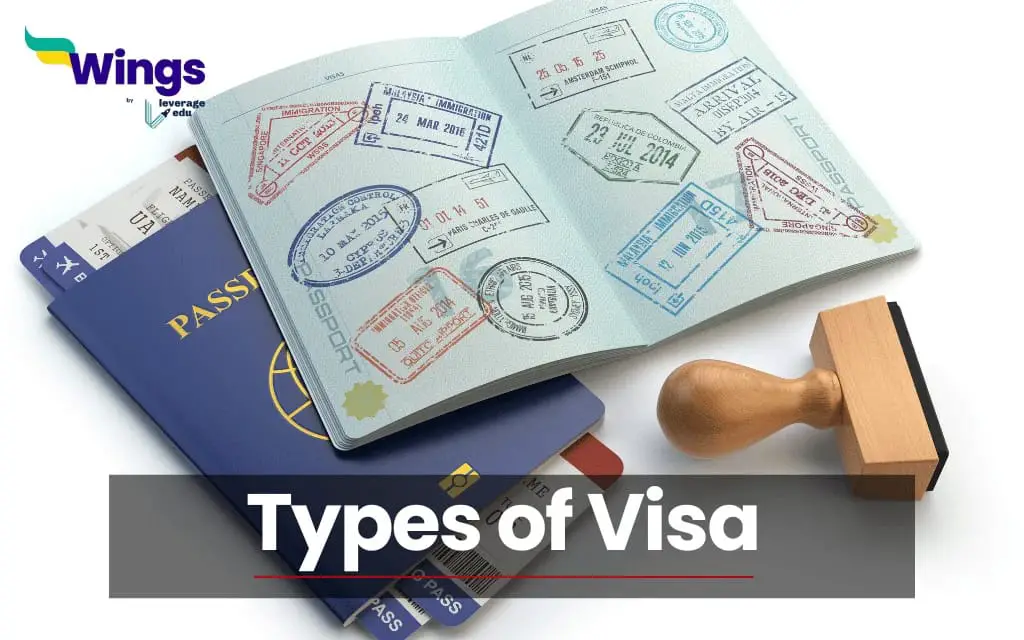Types Of Student Visas


If you intend to study outside your country, one of the most important things you need to do is apply for a student visa. A student visa allows you to legally travel to another country and stay there while you study. All countries have different rules and visa categories depending on the type of study program you are pursuing. These types of visas may depend on whether you are looking for university, language courses, high school or vocational education.
Let us take a closer look at the types of student visas offered by some of the top study destinations in the world, including the United States, the United Kingdom, Canada, Australia and the European Union countries.
1. United States of America (USA)
The United States is perhaps one of the most sought-after countries for foreign students. The United States government offers three major student visas depending on the type of program.
F-1 Visa
The F-1 visa is the most widely used visa in the United States. The most popular student visa in the United States, this is for academic students at an accredited college, university, high school, private elementary school, seminary, conservatory or language training program. Students must be enrolled full-time in a course or program that leads to a degree or certificate to qualify.
Key Features:
- Allows part-time campus work (up to 20 hours a week).
- Optional Practical Training (OPT) in Graduation.
- Expires for the duration of the course of study.
M-1 Visa
The M-1 visa is open to students who want to study at vocational or technical institutions. They are classes with a greater emphasis on practical training than earning a degree.
Principal Features:
- Expense prohibited during study (except for certain exemptions).
- Students are required to show funds for the duration of the course.
- Less versatile than the F-1 visa.
J-1 Visa
The J-1 visa is an exchange visitor visa. It is used for students, scholars, teachers, professors, and interns participating in education or cultural exchange programs.
Key Features:
- Mostly used for short-term educational programs or internships.
- Some participants are required to return to their native land for a minimum of two years after completing the program.
2. United Kingdom (UK)
The United Kingdom has several student visa categories depending on the age of the applicant and the length of the course.
Tier 4 (General) Student Visa
This is a student visa for applicants who are 16 years and older to study at a UK university, college, or school.
Key Features:
- You need to hold an offer from a certified sponsor (school, college, or university).
- Requires evidence of English language ability and finances.
- Allows a certain number of hours of work (normally 20 per week, in term-time).
Child Student Visa
- For a child between the ages of 4 and 17 attending an independent (ie, private) UK school.
Key Features:
- Parental consent required (In the case of under 12, then a guardianship agreement may be in place).
- Short-term study visa (To study a short course (eg, language course) in the UK for not more than 6 months).
Key Features
- The visa cannot be extended or changed to another type of visa.
- No employment is permitted on this visa.
3. Canada
Officially, it is not referred to as a “student visa”, but foreign students require a study permit to study at an institution designated by the government.
Study Permit
The Study Permit is a document of authorization to facilitate foreign nationals to study at designated learning institutions (DLIS) in Canada.
Key Features:
- Usually accompanied by a Temporary Resident Visa (TRV) or Electronic Travel Authorization (ETA).
- Allows part-time on-campus work while at school (20 hours per week) and full-time off-campus work during vacations.
- Wives or husbands may be eligible for an open work permit.
- In some situations students may be eligible for a Post-Graduation Work Permit (PGWP).
4. Australia
Australia has a single overarching student visa class for international students.
Subclass 500 Student Visa
The Subclass 500 visa allows students to study full-time in Australia at an approved institution.
Key Features:
- Includes all education levels: school, university and vocational training.
- Includes study in a curriculum that appears on CRICOS (Commonwealth Register of Institutions and Courses for Overseas Students).
- Allows 48 hours of work fortnightly (two weeks).
- May allow family members to join the student.
- May be a route to a temporary graduate visa application upon completion of studies.
5. European Union (EU)
Student visa policy differs between states in the European Union, but due to EU-wide arrangements, it is often similar.
National Long-Stay Visa (Type D)
In the case of international students who will be studying in an EU member country for longer than 90 days, a Type D visa is required.
Key Features:
- Each nation has its own set of rules and procedures.
- This usually involves becoming an approved setting and providing financial proof.
- Is capable of authorizing work rights, depending on the state.
- Is capable of leading to temporary residence allowance.
Student visas vary considerably depending on the state. They all, however, share a common overall goal: to allow foreign nationals to legally enter and stay in a nation for the purpose of pursuing an educational course. It is recommended before applying to take the time to locate the correct visa category in your situation and look up the latest requirements from the official immigration website of the country where you intend to study. Become familiar with the terms and conditions of your visa, such as work restrictions, length of stay, and whether renewal is required, so that you can reap the full benefits of your study abroad experience.
Read Also:
- Nature And Purpose Of Student Visa
- Definition Of Student Visa
- Experts To Investigate Allegations Of Student Loan Fraud
- How Can I Support Students To Use Chatgpt To Support Their Learning
- Factors Affecting Student Interest In Learning In Online Learning In Primary School
- Contextual Effects Of Cell Phones Use On Students
- Using Blogs To Enhance Student Learning
- Exploration of Problematic Smartphone Use Among Chinese University Students
- Recruitment For 15,000 Home Guard Posts, 10th Pass Can Apply; Recruitment For 200 Posts In CSIR
Recent Posts
No Charges Can Be Levied On UPI Transactions: News Of Charging ₹9 From Shopkeepers On A Fee Of ₹3000 Is Fake
No charges can be levied on Unified Payments Interface (UPI) transactions. The Finance Ministry on…
Ios26 Unveiled With Liquid Glass Layout At WWDC2025: Call Screening Feature Will Screen Unknown Caller Identities, Stay Translation
The tech agency Apple's biggest occasion of the year, the World Wide Developer Conference (WWDC…
Iphones May Appear With New Clear Icons: Apple’s Ios26 Unveils Liquid Glass Layout, May Also Feature AI Functions Like Visual Intelligence
All gadgets inclusive of Apple's iPhone will now appear with new icons and interface. Apple…
ChatGPT Worldwide: Users From India And US Dealing With Maximum Problems, Says Openai – We Are Investigating The Problem
Artificial intelligence employer Openai's famous chatbot ChatGPT went down globally on Tuesday (June 10). Thousands…
Soil, Radioactive Pollution And Noise Pollution
Soil Pollution Soil pollution is the adverse alteration of soil by the addition or removal…
Water Pollution
Water pollutants are described as any manner of undesirable materials or physical and chemical characteristics…


